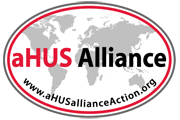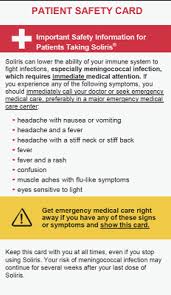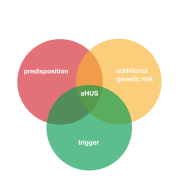It is over a decade ago now but I still recall vividly when, at the first meeting of what would become the aHUS alliance in 2013, the representative from Italy asked what we were doing about stopping eculizumab treatment.
Since at that point eculizumab had not been approved for all aHUS patients in the UK our thoughts were about accessing it for all to begin treatment, not stopping it.
Anyway the idea that treatment was not necessarily for life as we had been led to believe so far, intrigued me.
We were hearing about people who went into remission before eculizumab was available so it did not seem illogical that, for some, short term treatment was a possibility. Get it when needed.
At that time our aHUS patient organisation was going through the NICE evaluation process for the drug to be supplied by the National Health Service. We were providing the patient’s voice and case to thismydecision making body.
As time was of the essence and the next meeting of the alliance was a year away at least, I visited Milan where Dr Gianluigi Ardrossini was conducting pioneering work on dose tapering and stopping eculizumab treatment for aHUS in children.
I wrote about what I learned from my visit on our organisation’s website. I could do no more as there was no opportunity to challenge the extremely high cost per QALY which was what the decision making body used to determine cost effectiveness. Up to £30,000 cost per QALY was acceptable but the assumption that all patients would be on adult dose levels for life drove cost up to 20 to 25 times more than that benchmark. Among the highest they had ever seen. Although they did admit that eculizumab also produced the highest number of quality adjusted life years of any drug they had seen i.e. 44 QALYs.
If the costs were not based on all for life but a mix of patients who could come off treatment occasionally or permanently that could make a difference to the cost per QALY.
Someone whose job it was to critique the economic case made by the manufacturer had read my article about my Milan trip and brought the issue of stopping treatment into the debate, neither clinicians nor the manufacturer had raised it. I had created some reasonable doubt about the economic case.
So much so that when the decision makers approved eculizumab for aHUS it was with the qualification that there should be some research to find out if treatment could be safely stopped. That was in April 2014.
In the meantime I have been helping with the design and development and then management of a Clinical Trial for stopping treatment. Attending many meetings, reading numerous updates and asking questions.
Today in 2025 the results of that research have been published. An article has appeared in The Lancet ( Europe ). Led by Prof. Neil Sheerin the group’s work on this clinical trial over the past 8 years can now be read HERE.
The key findings of the SETS study are as follows:
One of 28 participants (3.6%) who withdrew from treatment met a primary outcome*. Four of the 28 participants (14.3%) relapsed. Only participants with an identified cause of complement dysregulation relapsed**. It was possible, by monitoring and rapid participant access, to reintroduce eculizumab treatment. Based on the pre-trial analysis plan, withdrawal from treatment may represent no greater risk to patients.
* (no anaemia or thrombocytopenia evident but kidney function chronically harmed). ** 2x CFH,1xCD46/MCP, and 1x C3.
So there it is. Some might say not startling news anymore.
Dont take the statistic that 85.7% of participants did not relapse after two years of follow up as representative for all aHUS patients because this trial had a screening process to exclude those who were thought to be at high risk of relapse. Those numbers would have added in assess the true relapse/remission rates.


